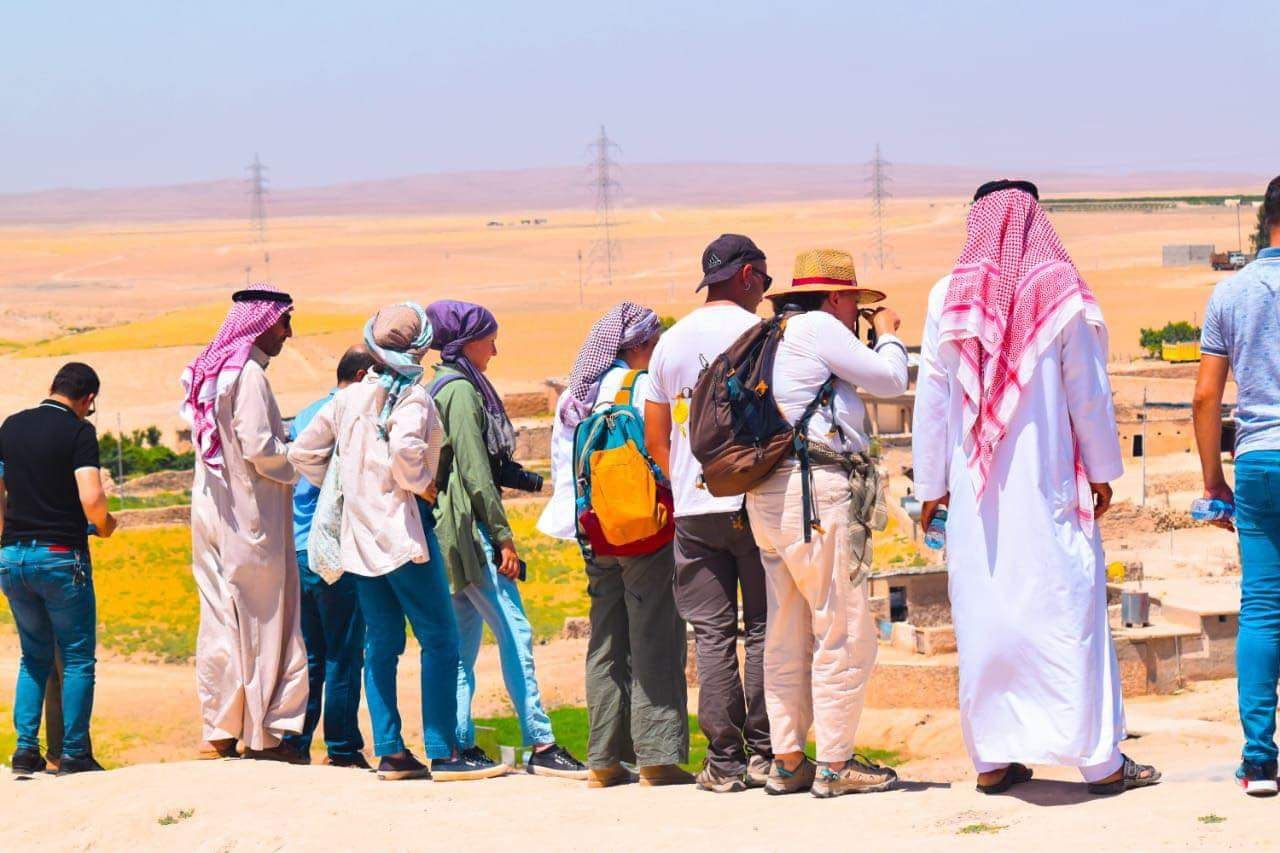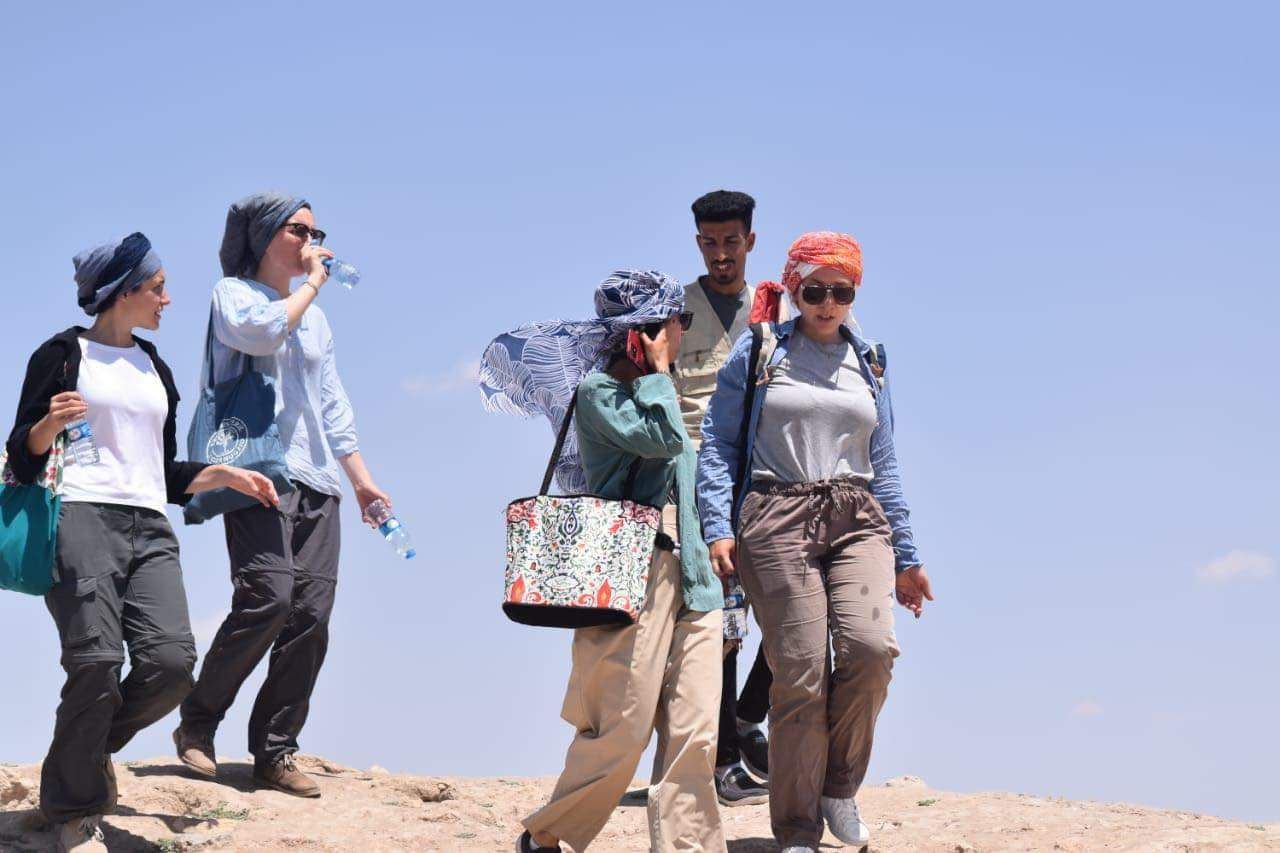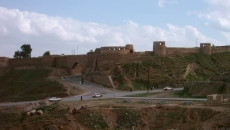An Italian team of experts is in to Tal Afar district of Ninewa province to excavate the damaged monuments and archeological sites, following several requests to rebuild the destroyed monuments at the hands of the extremist militants of the Islamic State of Iraq and Syria ISIS, including the historic castle, sending a glimpse of hope to the locals.
Tal Afar district in western Ninewa was captured by ISIS in June 2014 and was recaptured in August 2017, forcing most of its residents to flee the atrocities of the extremist militants whom destruct most of its archeological and historical sites.
The castle of Tal Afar was blown up by ISIS members with explosives when they took control of Tal Afar district in Nineveh Province in mid-2014.
The demolition and bombing operations included the ancient castle walls and gates, in addition to the government buildings that were completely located inside the fortress up to end of 2014.
After the toppling of Saddam Hussein's regime in 2003, the citadel housed the municipality and local police headquarters. The castle itself was used as a military base for US forces in the battle of Tal Afar in 2005.
Nicolo Marchetti, professor of Ancient Near East Archaeology and Art History at the University of Bologna, told KirkukNow that the joint Italian-Iraqi team has been working in old Mosul on the right bank of the city.
“Today, we are here to visit Tal Afar which is one of the cities rich of its historical sites It includes Qala, Suban, Karatapa, Tel Taya, Abi Maria and hundreds of other places.”
"The fortress of Tal Afar is one of the most beautiful monuments destroyed by ISIS. We did not expect the damage to be so big," Marchetti said.
According to historical sources; the castle of Tal Afar was built during the Assyrian period and the city was then known as Nimt Ashtar, meaning the garden of the goddess Ashtar, until the Romans renovated the castle and ruled it.

Amira Adel, a Turkmen resident of Tal Afar, told Kirkuk Now, “Despite the delay of the excavation team, we hope this is the first step in rebuilding our beautiful castle so that it unites us.”
She hopes the restoration and renovation of the castle to be launched soon.
The fortress was blown up by ISIS in mid-2014, destroying archaeological sites such as the council and gates, and government buildings inside the fortress were completely destroyed by the end of the year.
"There are about 300 monuments in Tal Afar, the most prominent of which is the Tal Afar Castle, which was 100% damaged and completely destroyed by ISIS," Amin Omar, director of archaeological sites in Tal Afar, said.
He called on the federal government and international organizations to delegate engineering and technical committees to estimate the cost of reconstruction and retrieve of the remaining parts.
"We hope that UNESCO and other relevant international organizations will look at this historic castle and try to rebuild it, as it is one of the most important symbols of civilization in Iraq, in addition to being a symbol of Turkmen unity in Tal Afar," he said.
UNESCO has been working for years to rebuild the destroyed monuments Mosul in through a project called Reviving the Spirit of Mosul.

"We visited the archaeological sites of Ninewa province up to the fortress of Tal Afar with the Italian team, which is the first archaeological envoy to reach the fortress in the past four decades," Omar Salim, an archaeologist, said.
In February 2022, the governor of Ninewa Najim al-Jibouri promised to include the reconstruction of the city's castle in this year's project plan.
"We were there to visit the archaeological city of Tal Afar and its castle, which was blown up by ISIS in 2014. The castle is an important historical monument and deserves attention and reconstruction," Claudia Safi, an archaeologist in the Italian team, told KirkukNow.
After the 2003 war and the fall of the Iraqi government led by Saddam Hussein, the fortress housed the headquarters of the municipality and local police, and was used as a military base for US forces until
In addition to the fortress of Tal Afar, ISIL destroyed several historical monuments in Mosul and other areas of Ninewa, including mosques, churches, temples and religious sites, most notably the blowing up of the famous minaret of Hadba and Al-Nuri Grand Mosque in old Mosul.






